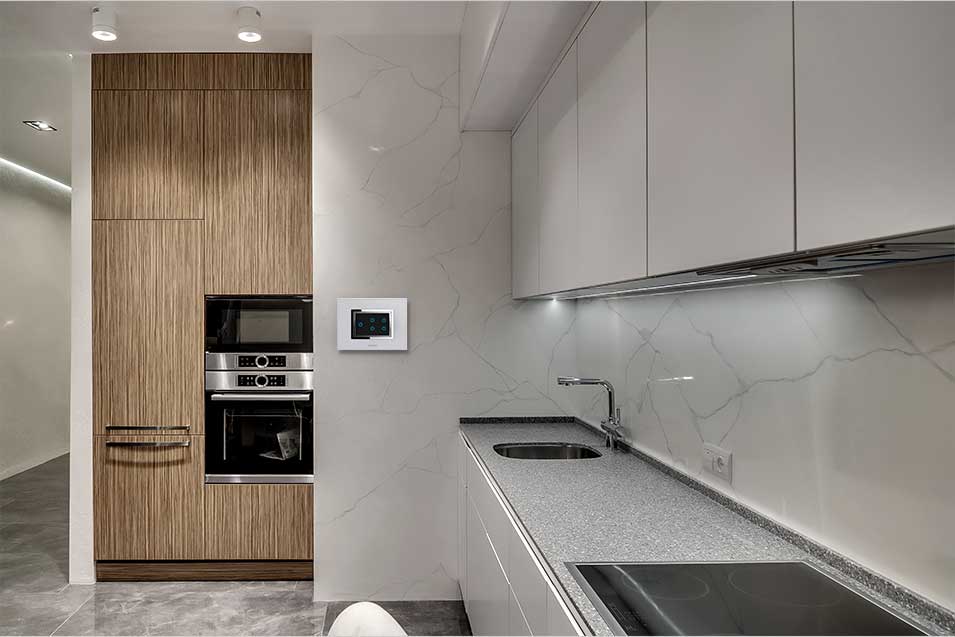
Choosing the right electrical accessories for your kitchen
If you are considering renovating your kitchen, then make sure that you get the right electrical accessories. These accessories will not only enhance the functionality of your kitchen but also contribute to its aesthetic appeal and safety. In this blog, we’ll explore some essential tips and considerations to help you select the perfect electrical accessories for your kitchen makeover.
Understanding Your Kitchen’s Electrical Needs
It’s important to understand the electrical needs of a kitchen before selecting the electrical accessories. Consider the appliances you use regularly and their power requirements. Modern kitchens demand multiple outlets to accommodate various appliances such as blenders, toasters, mixers, and coffee machines. Plan the outlets wisely with provisions for larger appliances like ovens, dishwashers, and refrigerators. Following are some of the accessories you may consider while renovating your kitchen:
- Sockets: There are primarily two types of sockets used in kitchens. The first type, positioned above the worktop, is typically used for appliances like microwaves, toasters, and blenders. The second type, under-unit sockets, cater to fixed or free-standing appliances such as refrigerators, dishwashers, and integrated microwaves. The design of these sockets should complement your kitchen’s overall aesthetic. For a sleek and modern look, consider opting for slim and flat outlets that can be flush-mounted with your backsplash. Additionally, USB outlets are a great feature, providing convenient charging points for smartphones and tablets.
- Switches: While planning your renovation, consider the placement and design of your kitchen to ensure the switches align with it. Embrace a mix of toggle, rocker, or smart switches to suit your technological preferences. Many electrical manufacturers offer a wide range of styles, colours, and finishes, allowing you to match or contrast them with your kitchen’s design theme. Make sure switches are conveniently located near the entrance, work areas, and appliances.
- Lighting: To truly bring your kitchen to life, you can’t overlook lighting. Lights, available in numerous shapes and sizes, can be wisely utilized not just for aesthetic purposes but also for safety and functionality. Consider installing dimmer switches to control the ambiance and intensity of your lighting. Under-cabinet lighting is another excellent addition, providing task lighting that illuminates your countertops without casting shadows. LED strip lights can add a modern touch and are energy-efficient. Downlights also make a fantastic addition to the kitchen, offering targeted lighting exactly where it’s needed most, while also providing an elegant, modern appearance.
- Smart Kitchen Integration: In today’s digital age, incorporating smart technology into your kitchen can significantly enhance its functionality. Smart outlets and switches can be controlled via smartphone apps or voice commands, offering convenience and efficiency. Imagine preheating your oven or starting your coffee machine with just a voice command. When selecting smart kitchen accessories, ensure they are compatible with your existing smart home ecosystem for seamless integration.
- Professional Advice and Installation: While DIY projects can be tempting, electrical work in kitchen renovation should be carried out by a professional electrician. They can provide valuable advice on the best products and installation practices, ensuring that your kitchen’s electrical system is safe, efficient, and compliant with local building codes.
Conclusion:
Choosing the right electrical accessories for your kitchen renovation requires careful consideration of your needs, safety, design preferences, and technological integration. By focusing on these aspects, you can ensure that your renovated kitchen is not only beautiful but also functional and safe. Remember, the key to a successful kitchen renovation lies in planning and working with professionals who can bring your vision to life.
Frequently Asked Questions (FAQs) :
Q1. How many plugs are required in the kitchen?
The number of plugs required in a kitchen can vary depending on the size of the kitchen and the number and type of appliances you plan to use. Generally, building codes and best practices suggest having at least two to four outlets along the countertop spaces for convenience, with additional dedicated circuits for major appliances like refrigerators, dishwashers, and ovens.
Q2. What outlets do I need in my kitchen?
The specific outlets you need in your kitchen depend on your appliances and how you use your space, but generally, you should have a mix of 20-amp, 120-volt circuits for heavy-duty appliances like the refrigerator and dishwasher, and several GFCI (Ground Fault Circuit Interrupter) outlets along countertops for smaller appliances and general use.
Q3. What is an electrical kitchen hazard?
An electrical kitchen hazard refers to any potential risk of injury or damage caused by the improper use, maintenance, or failure of electrical appliances and systems in the kitchen. These hazards can include electrical shocks, short circuits, and fires resulting from overloading outlets, using damaged cords, or operating appliances near water.
Q4. Are LED lights suitable for kitchen lighting?
LED lights are highly suitable for kitchen lighting due to their energy efficiency, long lifespan, and versatility in design options. They provide bright, even illumination that can be tailored for task areas, such as countertops and cooking surfaces, as well as for ambient or accent lighting, ensuring a functional and inviting kitchen environment.
Q5. Can I install pendant lights over a kitchen sink?
Yes, you can install pendant lights over a kitchen sink to enhance both functionality and aesthetics. These lights not only provide focused task lighting for washing dishes and food preparation but also add a stylish element to your kitchen decor. Ensure the pendant is positioned at an appropriate height to avoid any obstruction and choose a design that complements your kitchen’s overall theme.
Q6. How do I determine the optimal placement of outlets in my kitchen?
To determine the optimal placement of outlets in your kitchen, consider the layout of your appliances and work areas. Ensure that outlets are conveniently located where you’ll use small appliances, like near countertops and islands for mixers or toasters. Additionally, follow building codes and standards for safety and functionality.

